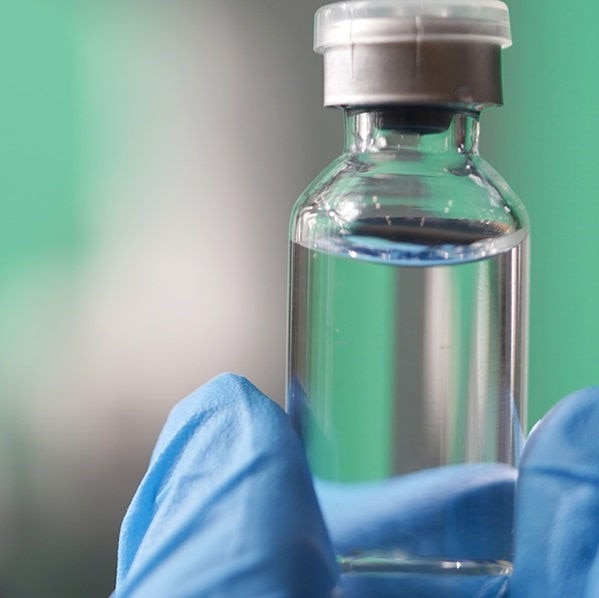News
August 20, 2025
Ask-the-expert: What’s next for pharma regulations in Asia-Pacific?
Discover the top 5 trends transforming pharma regulations in Asia-Pacific and how drug developers can navigate this evolving landscape with dsm-firmenich.
Summary
- As one of the fastest-growing pharmaceutical markets, Asia-Pacific presents major opportunities for drug developers—but evolving regulations can be difficult to navigate.1
- In an interview with dsm-firmenich’s regulatory expert, Purvesh Shah, Senior Manager Regulatory Affairs HNC Asia-Pacific, we reveal key regulatory trends in the Asia-Pacific region to be watched, from digitalization to the rising importance of sustainability.
- Keep reading to explore how these trends are shaping pharma regulations in this area and how drug developers can stay ahead with dsm-firmenich’s API portfolio elevated by Verilege™, a distinct suite of expert services and superior customer care.
The pharmaceutical regulatory landscape in Asia-Pacific is a fast-moving and complex space, fueled by quick-paced scientific innovation, evolving technologies, ever-demanding patient and industry expectations, and an influx of investment. While some countries in this region have stringent regulatory requirements, like Japan, others are rapidly reforming their regulatory pathways to become more accessible, streamlined, and aligned with international standards. For drug developers, this evolving environment can be both promising and challenging to navigate.
To shed light on ongoing developments—and what they mean for pharmaceutical companies—we spoke with Purvesh Shah, Senior Manager Regulatory Affairs HNC Asia-Pacific at dsm-firmenich. From our conversation, five key trends emerged that are shaping regulatory affairs in Asia-Pacific today.
1. Digitalization accelerates regulatory processes
Like other big markets, Asia-Pacific is increasingly adopting digital platforms and centralized databases to manage new regulatory drug submissions. For instance, in India, the Central Drugs Standard Control Organization (CDSCO) has launched online portals for drug approvals, clinical trials, and medical device registrations, improving efficiency and accessibility. One of the biggest digitalization efforts of the CDSCO is the Online National Drug License System (ONDLS), which uniforms drug licensing across all States and Union Territories.2 Notably, China, and Thailand have begun accepting electronic certificates of pharmaceutical product (eCPP) and good manufacturing practice (eGMP) without requiring additional legalization step.
Purvesh Shah explains: “The expansion of digitalization in Asia-Pacific not only streamlines and accelerates regulatory approvals but also enables better information sharing and tracking. For drug developers, this means faster approvals, greater transparency, improved efficiency, and significant reductions in time to market.”
2. Regional harmonization and global alignment gain momentum
There is a strong push towards harmonizing regulatory requirements across Asia-Pacific countries. For example, initiatives like the Association of Southeast Asian Nations (ASEAN) Common Technical Dossier have been developed to standardize the format of drug applications in this region to streamline pharmaceutical registrations. What’s more, Asia-Pacific is increasingly aligning its regulatory affairs with international regulatory standards, such as the International Council for Harmonisation (ICH), World Health Organization (WHO), and Pharmaceutical Inspection Co-operation Scheme (PIC/S).
“The efforts to harmonize regulations in Asia-Pacific, both within the region and globally, will make it easier for pharmaceutical companies to launch new drugs and reach new markets. The Access Consortium, for example, was developed to streamline regulatory efforts and enhance patient access to therapies by aligning five national health regulatory authorities from Singapore, Australia, Canada, Switzerland, and the United Kingdom. There has also been progress made in harmonizing regulatory compliance within the clinical trials research sector. For instance, India has improved its regulations around clinical trials through the New Drugs and Clinical Trials (Amendment) Rules, which came into effect in 1st April 2025."3,4
3. Advancing excellence in quality
Another key regulatory trend impacting drug developers in the Asia-Pacific territory is the heightened focus on quality assurance, Good Manufacturing Practices (GMP), and compliance with stringent regulatory standards. With this increased regulatory scrutiny comes more frequent inspections and higher expectations for quality management systems. India, for instance, is mandating upgrades to manufacturing facilities, enforcing EU-GMP certification for exports, and requiring comprehensive documentation and traceability throughout the supply chain.5
“This trend is good news for pharmaceutical companies. While it may increase operational costs and complexity, it will ultimately improve the reputation of drugs produced in the Asia-Pacific region, opening doors to other high-potential markets, like the United States and European Union.”
4. Innovation takes center stage
Innovation is driving the next wave of growth in Asia-Pacific, with governments and regulators actively supporting R&D and advanced therapies. Particularly, the region is experiencing growth in the biotechnology and biosimilars sector, with countries like India, Singapore, and South Korea offering benefits such as tax breaks, grants, and fast-track approvals for these drugs.
“To accommodate the development of cutting-edge therapies in Asia-Pacific, regulators are rolling out new guidelines and pilot programs—such as Japan’s Sakigake and Conditional Early Approval pathways, which are aimed at increasing early patient access to innovative medical products.6 The region’s regulatory support for innovation means faster pathways for novel therapies, making Asia-Pacific a more attractive destination for global R&D companies.”
5. Sustainability becomes a regulatory imperative
There is increasing global pressure to integrate sustainability into pharmaceutical operations, and Asia-Pacific is no exception where environmental compliance is becoming a structured regulatory requirement. However, while some governments are supporting local pharmaceutical manufacturing to reduce dependency on imports and promote self-sufficiency, the entire industry still faces mounting expectations to reduce its environmental footprint and embrace more sustainable practices.
Purvesh Shah confirms: “Pharmaceutical waste management, especially, is a pressing challenge, with a lack of legislation in all countries making it difficult to harmonize standards and practices. This regulatory gap complicates efforts to address pharmaceutical waste effectively and consistently across the region. As a result, there is a clear need for a stringent and standardized policy framework to regulate pharmaceutical waste and support Asia-Pacific’s transition toward more sustainable, environmentally responsible operations.”
How can pharma companies get ahead of Asia-Pacific’s regulatory trends?
While there has been significant progress in Asia-Pacific’s regulatory landscape, drug developers still face fragmented regulatory frameworks and country-specific requirements. To capitalize on the region’s growing market opportunities, staying agile and informed on the latest regulatory trends and developments is key. This is where a pharmaceutical partner can make a big difference.
Whether you are a small company requiring regulatory expertise, or a multinational business juggling multiple jurisdictions and diverse local requirements, partnering with a regulatory expert is key to success. At dsm-firmenich, our API portfolio is elevated by Verilege™, a suite of expert services and superior customer care designed to help drug developers enter, navigate, and expand within pharmaceutical markets with confidence. Here’s how we can support your success:
- Consistent, high-quality APIs, delivered reliably across our global network
- Streamlined and accelerated regulatory filings and product approvals
- Sustainability expertise to help you achieve your sustainability goals, including Scope 3 targets
- Global access to high-quality APIs via a worldwide network of strategically located production facilities.
For customers looking for robust regulatory support, we provide comprehensive documentation, including up-to-date dossiers for global registrations and access to the API section of marketing authorization approvals worldwide. This includes standardized and customizable statements tailored to specific market requirements, personalized support with developing robust regulatory strategy, comprehensive regulatory documentation gap assessments, and regulatory submissions.
References
1. Statista. Pharmaceutical industry in the Asia-Pacific region - statistics & facts. March 2024. Explore Statista’s comprehensive overview of the pharmaceutical industry in the Asia-Pacific region, including market size, growth trends, and key statistics: https://www.statista.com/topics/9140/pharmaceutical-industry-in-the-asia-pacific-region/#topicOverview
2. Pharmabiz. CDSCO launched series of digital initiatives to streamline pharmaceutical regulations: DCGI. August 2024. https://www.pharmabiz.com/NewsDetails.aspx?aid=172180&sid=1
3. Advancements in regulatory agility, regional collaboration, and digital transformation: insights from the Asia Partnership Conference of Pharmaceutical Associations (APAC). Advancements in regulatory agility, regional collaboration, and digital transformation: insights from the Asia Partnership Conference of Pharmaceutical Associations (APAC) | AAPS Open | Full Text
4. JSA. New Drugs and Clinical Trials (Amendment) Rules, 2024. Published October 2024. Explore JSA Law’s analysis of the New Drugs and Clinical Trials (Amendment) Rules, 2024, detailing updates on Clinical Research Organisation registration and regulatory processes: https://www.jsalaw.com/newsletters-and-updates/new-drugs-and-clinical-trials-amendment-rules-2024/
5. Zenovel. Decoding India’s Pharma Regulations: What’s New in 2025? Explore Zenovel’s comprehensive guide on India’s pharmaceutical regulatory updates for 2025, covering export protocols, documentation mandates, and compliance strategies: https://zenovel.com/decoding-india-pharma-regulations/
6. Matsushita, Shunsuke et al. “Overview of the Premarketing and Postmarketing Requirements for Drugs Granted Japanese Conditional Marketing Approval.” Clinical and translational science vol. 14,3 (2021): 806-811. doi:10.1111/cts.12898
Want to know more? Explore the benefits of our Verilege™ platform
Related content
-
-
Verilege™
-
Expert services
Recommended reading
-

3 December 2025
Elevating patient care with smart science and superior services
-

12 May 2025
dsm-firmenich’s API portfolio elevated by Verilege™
-

24 March 2025
Introducing dsm-firmenich’s new portfolio of taste solutions for pharmaceutical formulations
Quick links
Customized blends of functional ingredients in one single, efficient premix.
Streamline your product development process and get to market faster.
From trade shows to conferences and other industry events, find out where you can meet us next.
Talking Nutrition, Health & Care
Explore new science, consumer insights, industry news and more in our latest articles.
Discover educational whitepapers, webinars, publications and technical information.
Request samples, place orders and view product documentation.